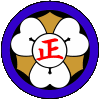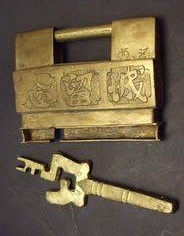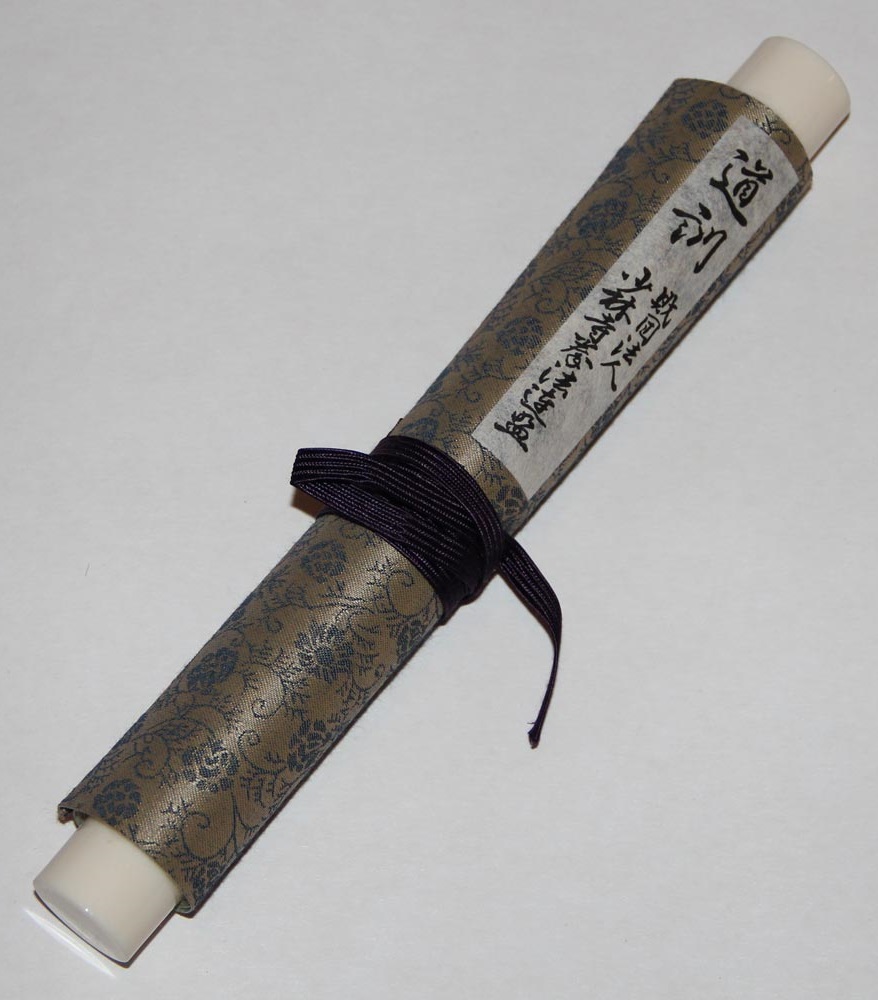Heian Yondan Description
After bowing and announcing the name of the kata ("Heian Yondan") ...
Yōi (cross open hands at groin level in
musubi dachi) and kiyomeri kokyū
(purification breaths)
Kamaete (shift right foot into nami heikō dachi
while closing hands into fists at knee width)
| 1 | Turn 90 degrees left into hidari neko-ashi dachi with hidari ni-no-ude uke | |
| 2 | Turn 180 right into migi neko-ashi dachi with migi ni-no-ude uke | |
| 3 | Turn 90 degrees left into hidari zenkutsu dachi with hidari kosa uke | |
| 4 | Step forward into migi neko-ashi dachi with migi soete uke | |
| 5 | Draw left foot forward into heisoku dachi and hands into tekubi mageri position at right hip | |
| 6 | Pivot 90 degree left on both heels while striking with hidari yoko kentsui uchi, then left foot choku geri chūdan, landing in hidari zenkutsu dachi with migi hiji ate against left inner arm | |
| 7 | Pivot 90 degrees right on left foot, drawing right foot into heisoku dachi and hands into tekubi mageri position at left hip | |
| 8 | Pivot 90 degrees right on both heels while striking with migi yoko kentsui uchi, then right foot choku geri chūdan, landing in migi zenkutsu dachi with hidari hiji ate against right inner arm | |
| 9 | Shifting left foot forward, turn 90 degrees left into hidari zenkutsu dachi with awase hidari age shuto uke migi gedan sukui uke | |
| 10 | Right foot choku geri chudan, landing forward in migi kōsa dachi with hidari osae uke, followed by migi uraken otoshi uchi | |
| 11 | Pivot 225 degrees left on the balls of both feet into hidari neko-ashi dachi with hidari yoko uke | |
| 12 | Right foot choku geri chūdan, landing forward in migi han-zenkutsu dachi with junzuki-gyakuzuki | |
| 13 | Pivot on the left foot 90 degrees right into migi neko-ashi dachi with migi yoko uke | |
| 14 | Left foot choku geri chūdan, landing forward in hidari han-zenkutsu dachi with junzuki-gyakuzuki | |
| 15 | Pivot on right foot 45 degrees left into hidari neko-ashi dachi with hidari soete uke | |
| 16 | Step forward into migi neko-ashi dachi with migi soete uke | |
| 17 | Step forward into hidari neko-ashi dachi with hidari soete uke | |
| 18 | In place perform morote ura-shutō uke w, then morote jōdan haishū oyayubi zuki, followed immediately by pivoting 45 degree left with awase morote gedan uke migi hiza geri chūdan and kiai, then as the right foot lands pivot 225 degrees into hidari neko-ashi dachi with shuto uke | |
| 19 | Begin moving forward, the suddenly turn 90 degrees right and lunge forward into migi neko-ashi dachi with migi shutō uke |
Zanshin yame by stepping back a full stride
with left foot, then turning 45 degrees
with drawing the right foot into kamaete)
Naotte (perform tekagami movement while sliding right
foot into musubi dachi)
Rei (bow)


 As
with each new kata, it is important to remind
oneself of the adage: "Manabu no tame ni hyakkkai,
jukuren no tame ni senkai, satori no tame ni manga
okonau" (学ぶのために百回、熟練のために千回、悟りのために万回行う.).
A hundred times to learn, a thousand
times for proficiency, ten thousand
repetitions for complete understanding.
A related Okinawan saying is "ichi kata san nen"
(一型三年): one kata three years. Think
of it this way: it takes about 50 seconds to
perform Heian Yondan. So in just ten
minutes per day for only ten days (or twenty minutes a
day for just five days), you can learn the correct
sequences of movements in this kata.
But to become truly proficient-to be able to perform it
correctly, and with the speed, power, timing, and bushi damashii (samurai spirit) necessary
to make its techniques effective in a real self-defence
situation will take a thousand repetitions, which
equates to 100 days at ten repetitions a day.
And to fully understand and apply all of its principles,
nuances, and variations will take 1,000 days (three
years) at ten repetitions per day.
As
with each new kata, it is important to remind
oneself of the adage: "Manabu no tame ni hyakkkai,
jukuren no tame ni senkai, satori no tame ni manga
okonau" (学ぶのために百回、熟練のために千回、悟りのために万回行う.).
A hundred times to learn, a thousand
times for proficiency, ten thousand
repetitions for complete understanding.
A related Okinawan saying is "ichi kata san nen"
(一型三年): one kata three years. Think
of it this way: it takes about 50 seconds to
perform Heian Yondan. So in just ten
minutes per day for only ten days (or twenty minutes a
day for just five days), you can learn the correct
sequences of movements in this kata.
But to become truly proficient-to be able to perform it
correctly, and with the speed, power, timing, and bushi damashii (samurai spirit) necessary
to make its techniques effective in a real self-defence
situation will take a thousand repetitions, which
equates to 100 days at ten repetitions a day.
And to fully understand and apply all of its principles,
nuances, and variations will take 1,000 days (three
years) at ten repetitions per day.